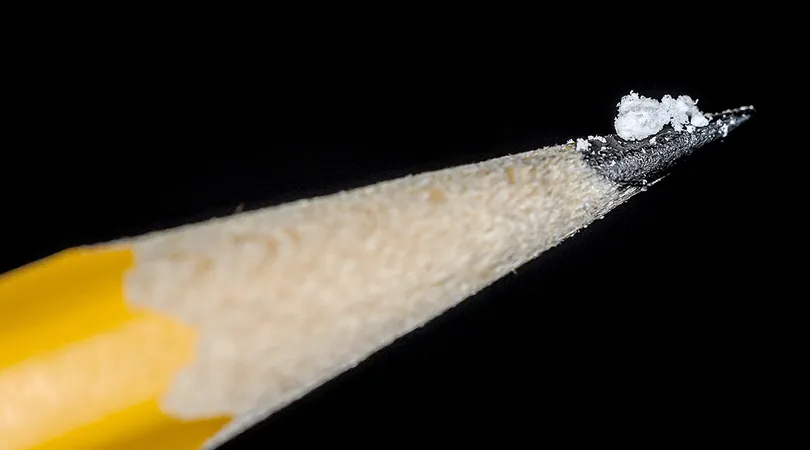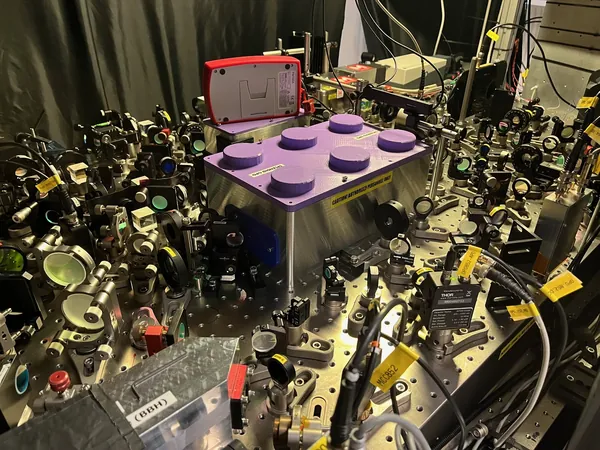
Revolutionary Opioid Overdose Treatment Might Also Alleviate Withdrawal Symptoms!
2025-01-03
Author: Arjun
Groundbreaking Discovery in Opioid Overdose Treatment
A groundbreaking new study unveils that opioid receptors located outside the brain could play a crucial role in opioid overdoses, potentially offering a way to mitigate the punishing withdrawal symptoms often triggered by naloxone, the standard treatment for opioid overdose.
Understanding Opioid Functioning
Opioids function by attaching to receptors dispersed throughout the body. In overdose scenarios, opioids bind to the brain’s receptors responsible for regulating breathing and heart rates, leading to a perilous drop in these vital functions, a phenomenon termed opioid-induced respiratory depression. This condition poses a considerable risk of death if not promptly addressed. The rise of synthetic opioids, notably fentanyl, compounds this issue, as these substances can easily penetrate the brain and have a stronger binding capability compared to traditional opioids.
The Role of Naloxone
Naloxone acts swiftly to counteract opioid-induced respiratory depression by binding more strongly to the same brain receptors as opioids, blocking their effects and restoring normal respiration and heart rate. However, the downside is that it can provoke severe withdrawal symptoms, leaving recovering individuals anxious and potentially pushing them back towards drug-seeking behavior.
Research Insights
Brain Ruyle, a researcher at Washington University in St. Louis, remarked, “While naloxone is generally effective in reversing opioid-induced respiratory depression, the precipitated withdrawal can be extremely unpleasant for individuals recovering from an overdose.” Intriguingly, the research team led by Ruyle focused on the peripheral nervous system, hypothesizing that receptors outside the brain might also influence overdose outcomes, thus paving the way for innovative treatments.
Testing a New Approach
Could a safer alternative be on the horizon? To investigate this theory, Ruyle and his colleagues tested a naloxone derivative called naloxone methiodide, which does not enter the brain, on rodents exposed to various doses of fentanyl. Initial results were astonishing: this derivative successfully prevented respiratory depression in the test subjects, indicating that peripheral receptors play a more significant role in overdose-related respiratory issues than previously acknowledged.
Experiment Findings
In their experiments, when naloxone methiodide was administered to rats post-exposure to fentanyl, it efficiently restored normal respiration—even at lower doses. However, higher doses necessitated more of the naloxone derivative to achieve similar effects. Significantly, no trace of naloxone methiodide was found in the brain, underscoring that the treatment was effective solely through peripheral receptor action.
Evaluating Aversive Responses
Further testing aimed to assess whether naloxone methiodide led to the daunting aversive responses seen with naloxone. The results were optimistic: while rats treated with conventional naloxone avoided the treatment area post-experience, those given naloxone methiodide displayed no aversion, meaning they didn’t associate treatment with negative experiences.
Implications of the Research
Undoubtedly, this research is in the preliminary stages and necessitates extensive further investigation, but the implications are monumental. Jose A. Morón, the study's senior author, enthused, “Our findings provide evidence that blocking peripheral opioid receptors may be a potential new strategy to reverse opioid-induced respiratory depression without inducing withdrawal, anxiety, and aversive reactions, all of which can contribute to relapse.”
Conclusion
This innovative research comes at a crucial time, as millions globally grapple with opioid use disorder and overdose risks. The potential development of naloxone methiodide could represent a significant leap toward more humane and effective treatment options for those in dire need, steering them away from relapse and towards recovery. As the fight against the opioid crisis continues, will this new discovery pave the way for transforming overdose interventions? The world watches closely—awaiting the next breakthrough in opioid treatment!





 Brasil (PT)
Brasil (PT)
 Canada (EN)
Canada (EN)
 Chile (ES)
Chile (ES)
 Česko (CS)
Česko (CS)
 대한민국 (KO)
대한민국 (KO)
 España (ES)
España (ES)
 France (FR)
France (FR)
 Hong Kong (EN)
Hong Kong (EN)
 Italia (IT)
Italia (IT)
 日本 (JA)
日本 (JA)
 Magyarország (HU)
Magyarország (HU)
 Norge (NO)
Norge (NO)
 Polska (PL)
Polska (PL)
 Schweiz (DE)
Schweiz (DE)
 Singapore (EN)
Singapore (EN)
 Sverige (SV)
Sverige (SV)
 Suomi (FI)
Suomi (FI)
 Türkiye (TR)
Türkiye (TR)
 الإمارات العربية المتحدة (AR)
الإمارات العربية المتحدة (AR)